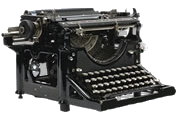Intent on Battle (U.S. Army Report, 1919)
Here is a page from The Enemy Order of Battle report (1919) by the subsection of the same name that was an arm of the U.S. Army General Staff. The report tells of Baccarat, a portion of the Western Front during the later part of the war that was quiet, by mutual agreement between the French and Germans – until the U.S. Army took their place in the French position – and then all Hell broke loose.
Intent on Battle (U.S. Army Report, 1919) Read More »
